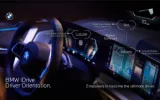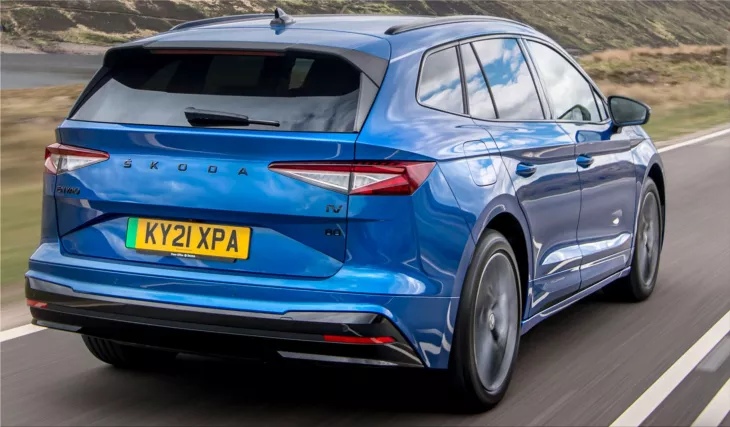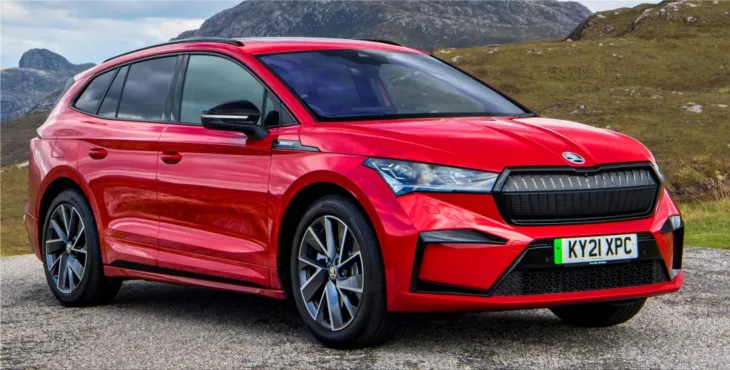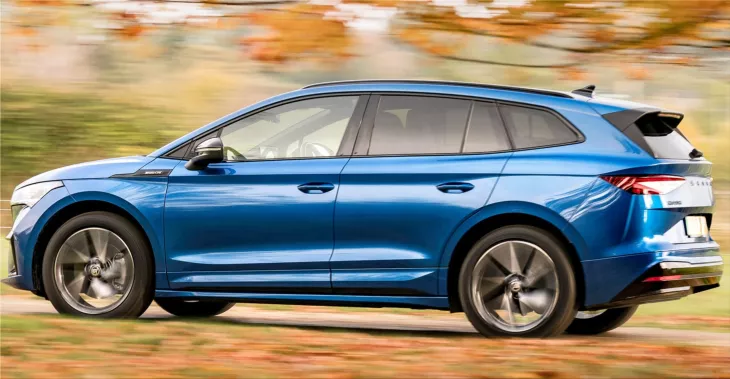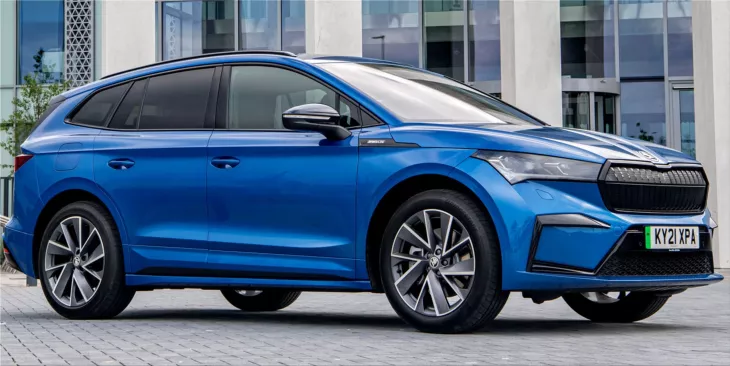After the purely rear-drive versions and the pending RS, the Skoda Enyaq iV electric car is now available in an 80x version. Like the Volkswagen group's other 100% electric models, the Skoda Enyaq iV is based on the MEB platform. Therefore, it is logical that there are many similarities between the different model versions like the Audi Q4 e-Tron, the Volkswagen ID3 and ID.4, and this Skoda. Therefore, the Enyaq iV was presented in 60 and 80 versions, both equipped with a synchronous electric motor on the rear axle and, therefore, pure propulsion. The rounded figures, in this case, refer to the battery capacity - 58 kWh net in the first case, 77 kWh in the second, as for ID.3 and ID.4, respectively.
The Skoda Enyaq iV electric car was recently available with an x after 80. This means that it uses the same battery as the 80 "just about," but it can also count on a four-wheel drive. Not via a transmission shaft between the two axles as for a car with an internal combustion engine, of course, but using a second electric motor on the front axle (of the asynchronous type). This produces a total power and torque of 265hp and 425Nm, compared to 204hp and 310Nm for the normal 80. Both versions of the Enyaq are comparable in driving to the 40 and 45 Quattro versions of the Audi Q4 e-Tron. Note that the 299bhp Q4 e-Tron 50 Quattro (and the Volkswagen ID.4 GTX) will also soon have a Czech cousin in the form of the Enyaq iV RS.
In the meantime, the rest of the Skoda Enyaq iV range can also be ordered in Sportline trim, with sports suspension lowered by 15mm at the front and 10mm at the rear (this option is also available on non-Sportline models, for €230). For the rest, these sportier versions are entitled to black accents on the bodywork, rims of at least 20 inches (against 19 otherwise), and of course, some sporty touches in the cabin. Our test car wasn't a Sportline, but it was lavishly decked out with packs and options that took the base price from €50,820 to a total price of €67,480 - yes, we're talking about a Skoda!
The days when VW's Czech subsidiary presented itself as the alternative for temperate car buyers are clearly over, as evidenced by the "Chrystal Face" part of the Light & View Plus Pack that our test car was equipped with. It consists of 130 LEDs integrated into the "radiator grille" (behind a transparent plastic wall). The grille is thus illuminated when the dipped beam headlights are on. Still, when locking and unlocking the car, this completely superfluous lighting also becomes dynamic, creating, according to Skoda, an attractive spectacle.
Either way, when you're in the electric car, you don't have to stare at the glowing grille, and on the contrary, you can enjoy an interior that looks much more refreshing than that of the VW ID.3 and VW ID. 4. The small screen behind the steering wheel is surprising at first, but you quickly get used to it, while the ergonomics are also much better than those of the mentioned Volkswagens. But again, this is valid for all Enyaq iV. The big difference between the 80 and the 80x is noticeable when driving. With its additional electric motor, this four-wheel-drive version is, of course, even heavier (at least 2193 kg compared to 2170 kg), but you don't feel that much in practice.
What you notice is that the Skoda Enyaq iV 80x suffers less understeer. Yes, the 80 is rear-wheel drive, but due to the "safe" chassis tuning, the high weight tends to push the nose outward rather than inward when cornering. The all-electronic control seems to make the all-wheel-drive Skoda 80x more efficient in this respect. In addition, the traction force, already excellent on the regular 80, is truly impeccable here, whether you ride on dry or wet surfaces. And with its additional 61 hp, the 80x is, of course, more efficient in acceleration and cornering. For example, it accelerates from 0 to 100 km/h in 6.9 s (instead of 8.5) - the maximum speed remains electronically limited to 160 km/h.
Naturally, all this has a less favorable effect on autonomy. The Skoda Enyaq iV 80x electric car will travel 45 km less than the standard 80 according to the WLTP standard with the same battery. As a result, regular consumption is logically a little higher (at least 17.3 kWh/100 km instead of 15.9 kWh/100 km, depending on equipment and wheels). In our week of testing, we averaged 24.5kWh/100km, 2.4kWh more than our tester got from the Enyaq iV 80 - although we should point out that the latter was tested in the summer and that our 80x was equipped with winter tires.
The excellent news about charging: while the Enyaq iV 80 could only be charged with 50 kW of direct current at the time of our test, it can now be charged with 125 kW. With a fast charger of this power, the battery should be charged to 80% in just 38 minutes. With an AC of 11 kW (wall box), a full charge takes 7.5 hours. The sad thing is that you still have to pay €745 more for a charging cable that can be plugged into a standard household socket.
Another thing to accept if you choose the four-wheel-drive version: it takes 0.6 m more to turn right (11.5 against 10.9 m). Luckily, you don't have to sacrifice ride comfort because even with our test car's 21-inch wheels, everything was fine thanks to the adaptive shock absorption, aside from some dry reactions to small bumps.



